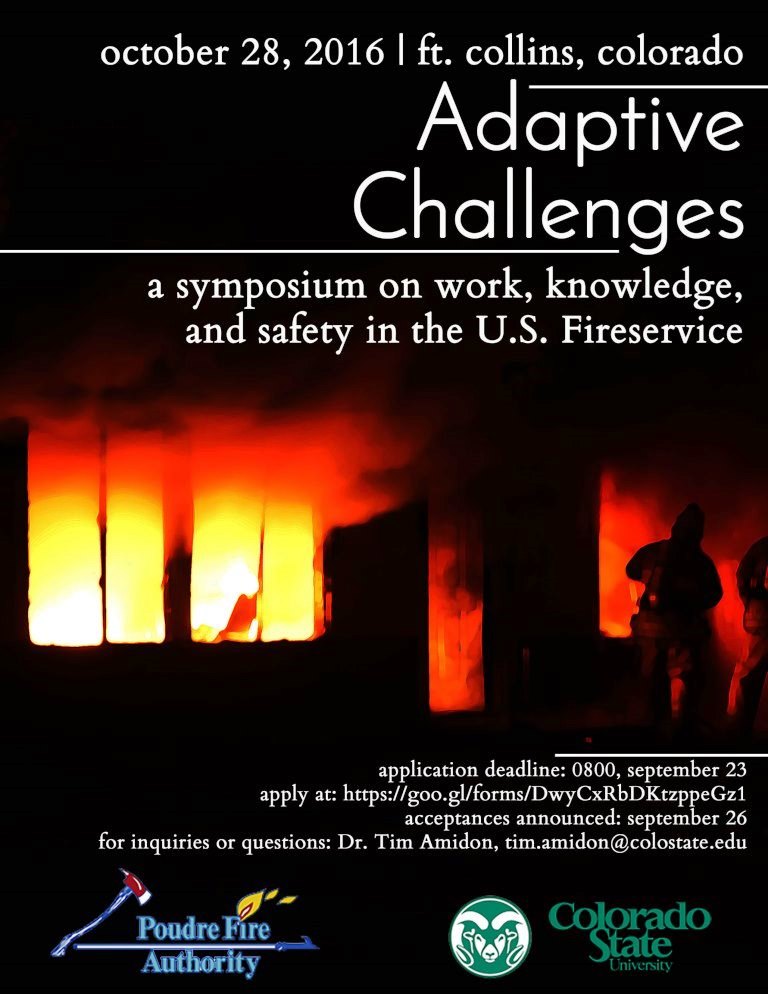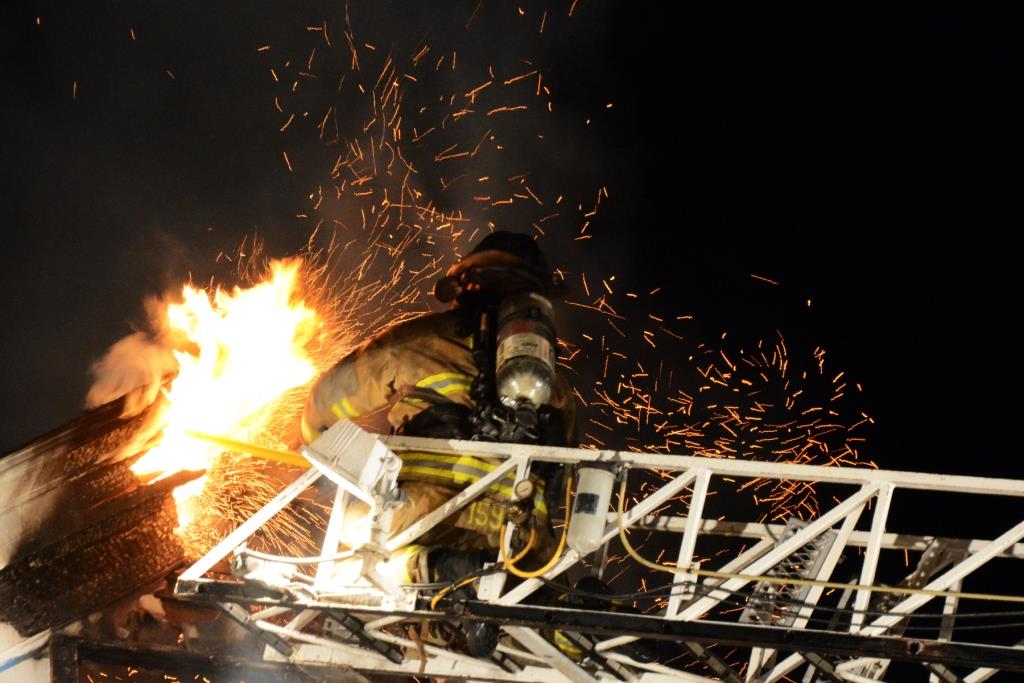
On Friday, firefighters, researchers, and fire-service officials are gathering at the Colorado State University Powerhouse Campus for the Adaptive Challenges Symposium. The event is sponsored by Poudre Fire Authority and organized by Assistant Professor of Rhetoric and Composition Tim Amidon in collaboration with Professor Elizabeth Williams in Communication Studies, Professor Kim Henry in Psychology, and Professor Tiffany Lipsey in Health and Exercise Science.
The title of the symposium, “Adaptive Challenges,” describes the challenges the fire service faces in regards to safety and line-of-duty death.
The fire service, Professor Amidon explained in an interview last week, tends to respond to concerns about on-the-job safety through technical approaches. As an example, the fire service has developed sensors in firefighters’ equipment to monitor movement and air consumption and signal danger to both the firefighters and crew leaders.
While this technology is valuable, Professor Amidon emphasized that researchers both within and external to the fire service are looking for more human solutions for better safety.
“Firefighters have a lot of the knowledge to interpret the risk that they’re facing, but organizationally and through training we don’t always empower firefighters at the entry level to have access to the genres and literacies necessary for making effective decisions about the risk they encounter on firegrounds and emergency scenes. Firefighters don’t only need to know how to swing the axe or pull the house, but also need to know how to do the tacit knowledge work associated with the profession,” said Professor Amidon. “Everyone needs to be thinking on the level of tasks, tactics and strategies.”

In layman’s terms, firefighting is still deeply influenced by its blue-collar roots. Compared with, for instance, the police service, the fire service offers few opportunities for firefighters learn research methods appropriate for empirically addressing the exigencies the fire-service faces or carrying on professional conversations about those challenges. Professor Amidon stated that he believes that firefighters of all ranks should be offered opportunities to learn and practice the genres and literacies necessary for identifying when they are in danger and that this is an area where education might be utilized to reduce fatality in a way that technology alone could and has not.
I asked Professor Amidon why it’s so important to study something that seems as technical as firefighting through a humanities lens.
One of the ways Professor Amidon sees his rhetoric and composition background as very applicable to the fire service is that it enables him to examine how research into firefighting safety is conducted.
The two primary organizations which research line-of-duty death in firefighting include NFIRS, the National Fire Incidence Reporting System, and NIOSH, the National Institute for Occupational Safety and Health. While NFIRS uses a simple coding system to track causes of firefighting fatality, assigning each death to one of nine codes, NIOSH offers more comprehensive, detailed investigations into the causes of fatality.
NIOSH’s approach is “mixed-method, multi-method,” said Professor Amidon. They use “multiple datasets to gain more insight about what’s going on in that moment. It isn’t just a single moment but a network of interrelated practices that give rise to a firefighter fatality.”
NIOSH’s approach, Professor Amidon believes, offers “qualitatively richer views about firefighter fatality.”
Professor Amidon also believes that it’s very important to approach challenges through an interdisciplinary lens. “Adaptive approaches need to get outside of the lens that we have only in our own discipline,” he said. While some believe interdisciplinary approaches can produce “watered-down” results, Professor Amidon believes that, on the contrary, working with researchers in other disciplines can help create a richer understanding of a problem.
“It’s a lot about listening,” he said: listening to firefighters and their experiences before going to engineers to design technological solutions to problems.
Before designing technologies, researchers and members of the fire service must ask, “How do we use technologies to empower humans to make more agentive decisions?”
Key note speakers at the symposium include Scott Heiss, Division Chief of Safety and Training for the Denver Fire Department, who, through his connections with the National Fallen Firefighter Foundation, does extensive outreach to families impacted by line-of-duty deaths, as well as Ron Timmons, a former Fire Chief and Lecture from the University of North Texas and Bill Hart-Davidson, Associate Professor of Rhetoric and Writing at Michigan State University with expertise in Technical Communication and User Experience.